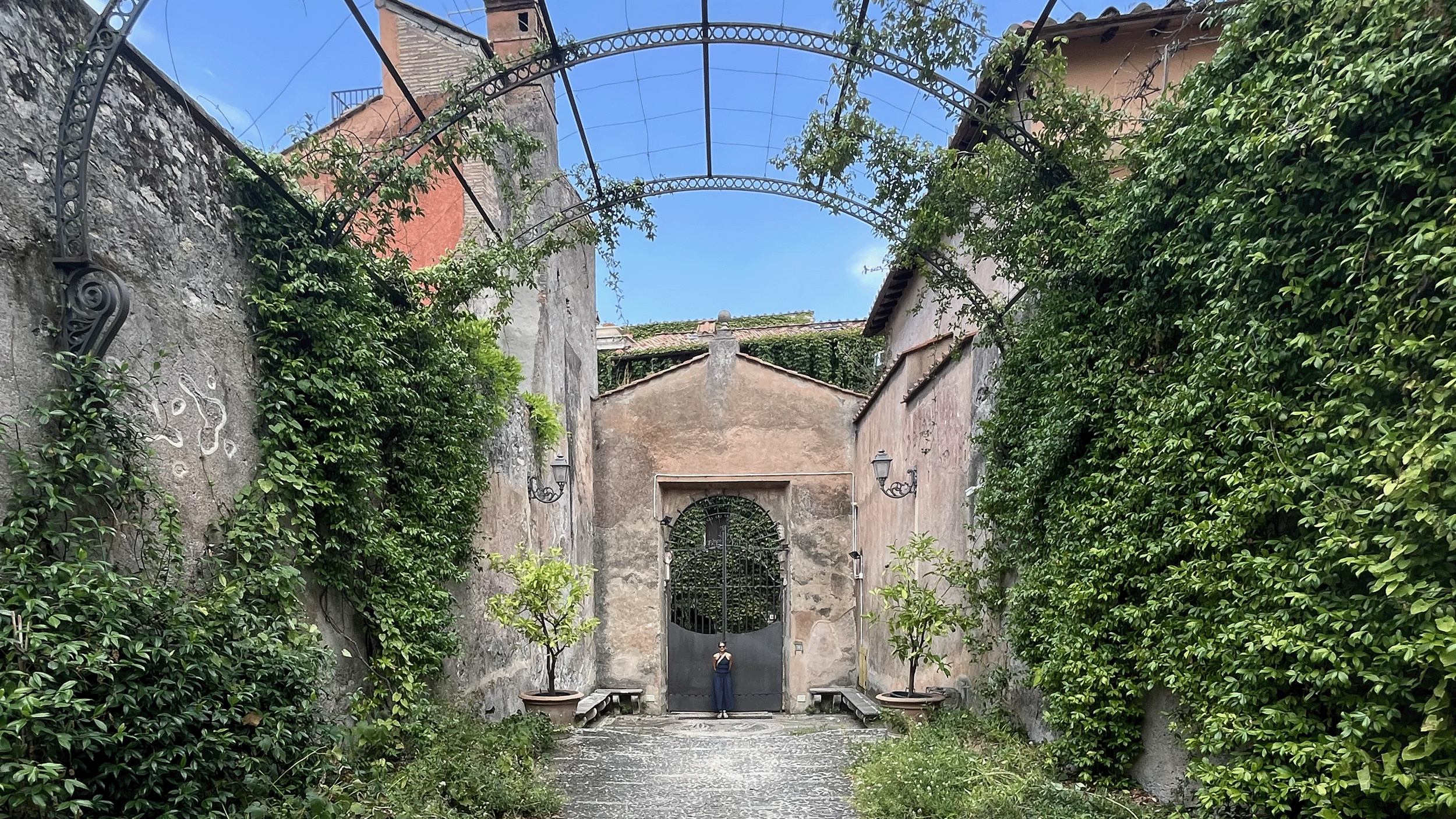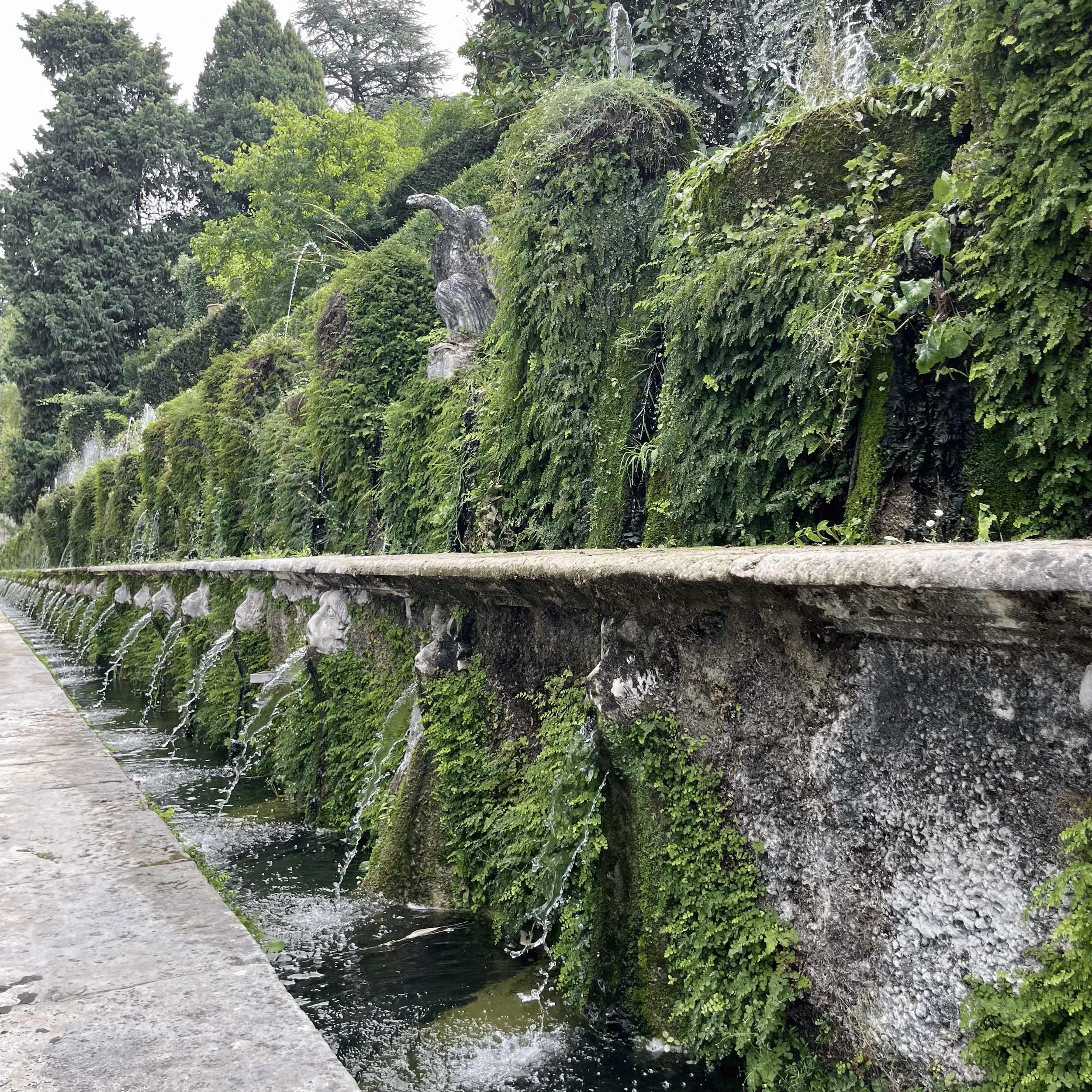HISTORICAL PRECEDENT AND OUR TRAVELS IN EUROPE
Lani and I like to travel. Equally, we are blessed to have chosen a career path that pairs well with travel. We wander with groups like the APLD to garden spaces all over the US learning from other talented designers and their projects. I teach a landscape design history class every May in the UK where I travel with students to gardens all over the south of England. So, to no surprise, when we are on our own, we often take in gardens on trips if not plan trips around sites we have yet to visit.
This year was our 30-year anniversary, and we planned a trip to the Mediterranean. With it, some gardens new and old. Of course, the Italian renaissance is a big topic in my class which gave me a few bucket list places. Well preceding the renaissance, Greece and Rome had a rather well-established hold on the world economy where we begin to see the emergence of a small middle class. They had weekend/vacation homes outside of Rome as time shifted from BC to AD. One of those Roman getaways was Pompeii. As many of you know, the way Pompei had its demise was also in a way a mumification of society that allows us now to look back into history with a rare unfiltered view of what was typical during that period. Some of that preserved was what we call the peristyle garden. A peristyle garden has an inner court flanked on three sides by a loggia (a set of columns supporting a shaded walkway along a building or wall).
A loggia (a set of columns supporting a shaded walkway along a building or wall)
As we walked the Roman streets of ancient Pompeii with our archeologist guide, I kept an eye out for the peristyle gardens of the past that framed many themed spaces of the Renaissance a thousand years later. Typically, we were being given the big picture tour, they were unaware of our esoteric need to see the inner spaces of the small homes. However, at one point, as the group headed up a Roman road and turned right into a new spectacle, I found a break in the street to the left. I was at the back of the pack and took a hard turn, snapping pictures as I walked. Not far into a building I could see the courtyard within reach. Yes, low and behold I stumbled on a set of still standing columns framing the three sides of an ancient garden. Green splashed in view despite the heat and dry of the region. And although this little gem was 1946 years old, I still sensed what the beauty of the space had been and the retreat it created for her users. We saw many spaces along our trip, some newer some ruined. All meaningful and special in their own way.
Lani standing next to a doorway in Villa d’Este
An unexpected, spontaneous treat at the end of our summer vacation found us visiting the Villa d’Este. Located less than an hour outside of Rome, in Tivoli, Italy, there is a perfect example of Italian Renaissance and the Italian garden style. I’ve been quite entertained to learn about the stories that brought these masterpieces to life during that time in history. The cardinals who were overlooked and not appointed to be the next pope, built these marvelous estates to provide solace to their hurt egos. This chance to visit one of the best examples had us very excited!
Our tour began by walking the halls of the villa. Tall ceilings, huge doors, and expansive windows set the tone for grandeur. Each room had a theme and was full of symbolism with paintings that cover walls and ceilings. Amazing tile patterns and mosaics covered the floors. It was amazing, but the real draw for me were the gardens beyond.
Once through the villa, we were directed to step out onto a terrace for a view that took our breath away. We could see beyond the gardens of the estate, down into the valley and town below. Hillsides covered with olive tree groves and terracotta rooftops. A very distinct central axis connected the entrance gate to the villa with several wings extending on each side. Impressive does not suffice.
Garth and I strolled through the gardens. The plantings themselves were rather simple with very little color. Predominantly hedges and trees the landscape was an unassuming backdrop. Honestly, it balanced the real heart of the gardens. Water.
The water features at Villa d’Este are spectacular! The system consists of 51 fountains and nymphaeums, 398 spouts, 364 water jets and 64 waterfalls. These are all connected by 875 meters of canals, channels, and cascades throughout the site. Initially, a small canal first provided the water but later a 600-meter tunnel was dug from the Anio River to supplement the demands. The force of gravity powers everything made possible by the changes in elevation of the site. My favorite of the features was The Hundred Fountains. It is a long pathway that is lined by a wall of fountains spraying from whimsical faces or masks, lilies, and eagles.
Adding garden stops into our travel adds wealth to our trips. We see things we’ve never seen before. We learn from what’s been done historically. Spending time in beautiful outdoor settings nurtures us and inspires our own creations. And when we are traveling, we’re often in a mindset to absorb it more. We’re away from the dailyness of our lives that can sometimes pull us from inspiration. It’s become an itinerary staple.







